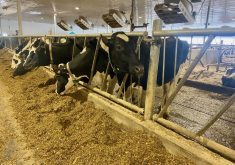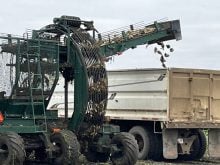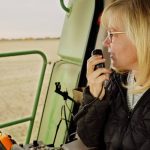Hockey is probably the reason girls make up almost two-thirds of Canada’s 4-H membership.
“Lots of boys are involved in hockey,” said Mary-Ann Carson, the newly elected president of the Canadian
4-H Council. Boys don’t have time to put into the monthly 4-H meetings and project work, said the Maidstone, Sask., farmer.
The statistics for 2002 show that of the 32,870 kids who were Canadian 4-H members, girls numbered 20,129.
The gender difference is most
obvious in the light horse projects, which draw three times as many girls as boys. But Carson said for the classic 4-H projects in beef, the boy-girl ratio is even.
Read Also

Accurate accounting, inventory records are important
Maintaining detailed accounting and inventory records is not just a best practice; it’s a critical component of financial health, operational efficiency and compliance with programs like AgriStability.
Carson, who is president during 4-H’s 90th anniversary year in Canada, said the organization is working to attract urban kids.
“It’s not just a farm kid thing.”
However Carson admitted it is a struggle since cities and towns offer many activities and distractions for kids.
“It’s hard to beat the stigma of cows and cooking,” but bringing in urban members will be even more important in the future as the rural population continues to shrink, she said.
Carson’s year in office will be marked by the challenge of Canada’s size. She plans to visit 4-H staff and projects in each province.
While the program is the same across the country, she said projects differ according to the local economy and geography.
For example, the East has more dairy, while the West has more beef. In Newfoundland, which has few areas suitable for agriculture, the projects include kite making and outdoor skills.
Not only can members be hard to recruit, but sometimes adult leaders can be scarce, especially now that both parents tend to have jobs. But it’s not a problem in Carson’s area in western Saskatchewan, which seems to have leaders “jumping out at you constantly.”
Carson has been a 4-H leader for 19 years for a variety of projects including crafts and life skills. But she has never led a livestock project, reserving that for her husband, Irvin, whom she met while they were both 4-H members. 4-H is in the family’s blood since their three children were all members and now their grandchildren are joining.
Among her duties she has chaperoned 4-H travel groups and chaired a national conference. But the highlight of her 4-H career is when young people who have graduated from the program return and tell her how much they appreciate the skills she taught them.
“That’s the most rewarding thing a leader can hear.”














